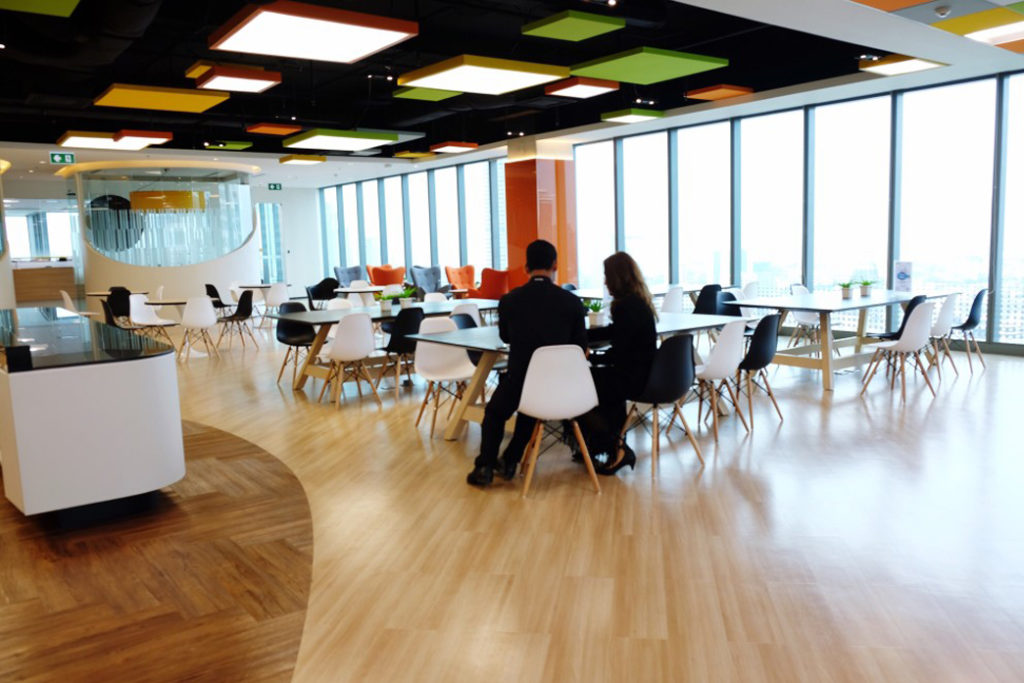
Hot desking is an office setup in which employees do not have a designated desk and instead have the freedom to sit anywhere they wish.
Hot desking is a workplace trend in which employees can work from any desk they deem appropriate for them. Most office workers have a designated desk, cubicle, or working space, but with hot desking, you can assign a specific office area to a large number of people.
While it may appear complicated at first, it is actually quite simple. In essence, your office would use a “Check-In” process, in which each worker enters an office space for a set amount of time and then exits to make room for someone else.
Hot desking workplaces feature a larger employee-to-desk ratio than traditional offices, meaning there are more employees than desks. If you’ve never heard of the concept before, it may seem unusual – won’t some individuals be left standing if there are more people than desks?
As we examine the benefits and drawbacks of hot desking, we’ll uncover the answer to that question, as well as many others.
What are the pros and cons of hot desking?
Hot desking has a number of advantages and disadvantages. Before going all-in on this workplace arrangement, carefully consider whether the benefits and drawbacks are appropriate for your specific company and culture.
With that said, let’s look at some of the benefits and drawbacks of hot desking.
What are the advantages of hot desking?

1. It is a cost-effective method of designing an office.
When the open spacing of a hot desking design is properly implemented, it uses less overall space than a traditional office-style design. Large teams may discover that hot desking can reduce their office operating costs by 30% while saving 15% to 25% on the amount of space they require.
2. It results in an open layout.
Hot desking promotes an open design, allowing for greater collaboration within the team environment. The design can be completely open, allowing for constant contact between coworkers. It can also include light separation, which provides workers with some privacy and personal space while still encouraging people to collaborate without requiring them to relocate to a new location.
3. It keeps remote employees in touch with the team.
When in the office, remote workers should have access to an office space. When those employees are not in the office, however, it creates an ideal opportunity for hot desking. These areas can be used as an additional meeting room, an informal creativity session, or even temporary storage. When these spaces are available, you’ll notice that the entire team’s environment becomes more relaxed.
4. It promotes a social culture.
Many employees grew up in an environment where work responsibilities were kept at work and personal responsibilities were kept at home. Having a social culture at work can sometimes lead to inefficiencies in productivity. It may also help to reduce the amount of interpersonal conflict that can occur on some teams. Individual seating assignments will also lead to most employees adopting a silo-based approach, which can reduce performance. Hot desking transforms the office into a communication tool rather than a piece of real estate.
5. It helps to organise the office.
People become more productive when their work environment is well-organised. In a traditional office setup, some offices may be completely organised while others may be completely trashed. That visual aesthetic can have an impact on team productivity. Because the space is so open with hot desking, it is easier to implement cleanliness policies. This reduces the amount of clutter present, allowing your teams and future customers to make the right first impression.
6. It gets rid of the office’s hierarchy.
There is a certain hierarchy in the traditional office, which causes workers to avoid those with seniority or important titles. Even when a “open door policy” exists, it is rarely used because the doors are not always truly open. The traditional structure is disrupted by hot desking. Flexibility is incorporated into the workplace because it encourages teams to collaborate regardless of title, status, or talent.
7. Flexibility to meet your requirements.
You can opt for hot desking for your entire team. You can also opt for hot desking for specific job functions. You don’t have to be 100 percent committed to reap the benefits of this design option.
(READ: Shared Offices in the New Normal)
What are the drawbacks of hot desking?

1. It may require the development of new IT strategies.
From an IT standpoint, many teams are geographically distributed. This means that a worker must log on to a specific computer in order to access their work. A better strategy for hot desking is to allow employees to log in at any available desk. To avoid the chaos of workers swarming on favorite locations, it is beneficial to have a system in place that allows workers to reserve their preferred desk before arriving at work for the day.
2. It may make some employees miss their personal space.
Although working together improves productivity for the majority of people, some team members may become less productive. Some people require privacy or personal space in order to concentrate on their tasks. Identifying these workers during the hot desking transition process allows you to seek out alternatives for these quality employees, such as remote working, telecommuting, or giving them their own space somewhere out of the flow of the milieu.
3. It has the potential to disrupt leadership.
For more than a generation, many employees’ career goal was to work their way up to the corner office with a window. Disrupting the office hierarchy can lead to resentment among employees who felt they were on their way to achieving their goal. Hot desking places someone with 20 years of experience next to someone who has just started, and they are treated as equals. That type of experience will not be enjoyed by everyone – on both sides of the equation.
4. It may lead to an increase in IT resources.
To function properly, hot desking requires the use of modern technologies. If you have a limited IT budget, it is likely that implementing a hot desking strategy will take some time. To encourage better overall collaboration, you must connect all employees to the best IT resources available. If you are not in a position to do so, this may be a design option you should postpone until you are able to afford it.
5. It may limit employee access when accommodations are required.
Before implementing any type of hot desking option, it is critical that your HR team review any previously requested accommodations. Some employees may have specific needs that must be met as part of their employment conditions. Hot desking may not meet those requirements. That could cause problems for your company, because health and safety concerns must be addressed for all employees, not just those who have not requested any accommodations.
Is Hot Desking Good For You?
Hot desking does have some significant advantages that are worth considering, particularly for startups and small businesses that need to maximise available space while minimising costs. However, in order to maximise the benefits and minimise the risks, it is critical to have a clear strategy and smart policies in place that make things work for everyone: employers and employees alike.
If you’re looking for a hot desk, don’t hesitate to chat with us now!

CEO